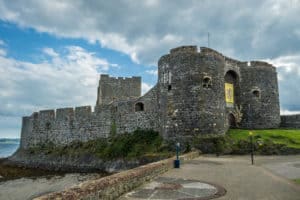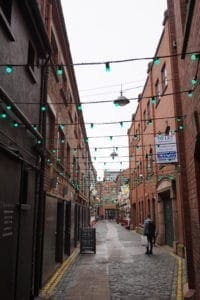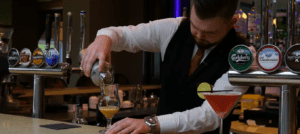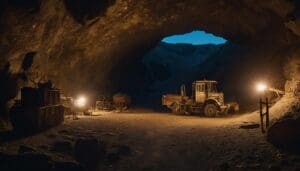The Hidden Folklore of County Cork: Unveiling Rebel County’s Mythic Tales
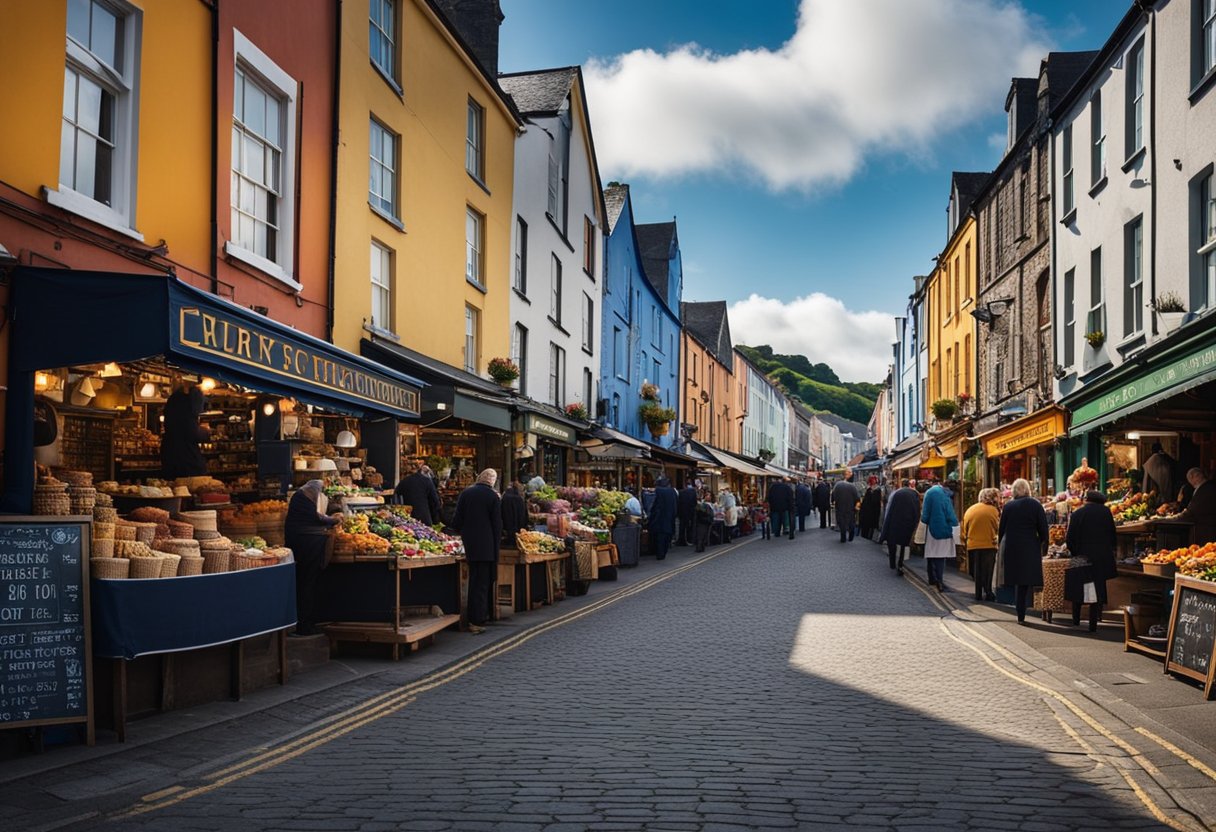
Updated On: April 15, 2024 by Maha Yassin
County Cork, known as the Rebel County, is a tapestry woven with colourful threads of folklore and history. Unique tales of heroism, defiance, and the supernatural have been passed down through generations, each contributing to the rich cultural fabric of this Irish region. Cork’s storied past is dotted with iconic figures and legendary events that resonate through its bustling towns and serene landscapes.
Within the bounds of County Cork, the heritage and culture run as deep as the roots of its ancient past. As we explore the hidden folklore of this area, we shall uncover what makes Cork so distinctive. From its historical significance in Ireland’s fight for independence to the enduring cultural panorama encompassing music, literature, and age-old traditions, County Cork remains where the past whispers to the present.
Geographical Essence of County Cork
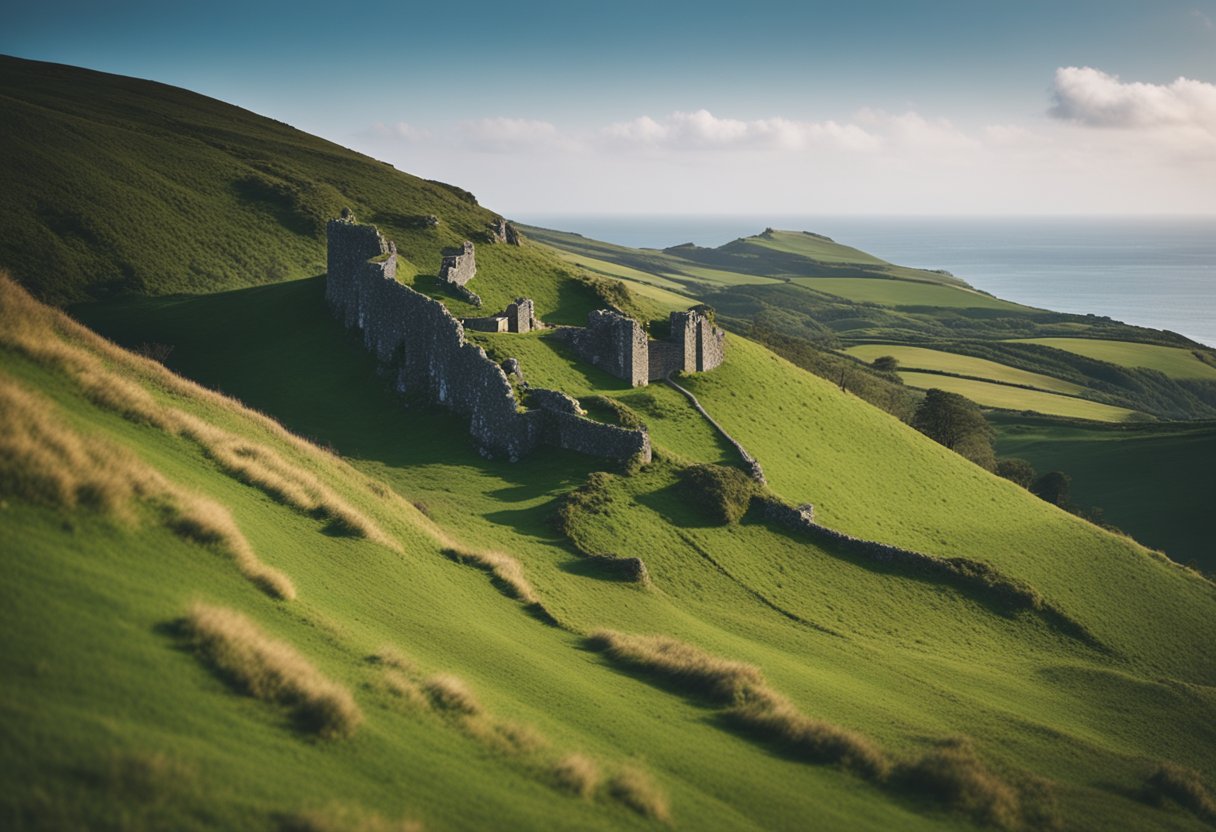
Before embarking on a journey through the geographical heart of County Cork, recognise the significance of its landscape and waterways, which are integral to the character and history of this part of Ireland.
Cork City
Cork City, christened as the ‘Rebel City’, is a mosaic of historical grandeur and contemporary dynamism. Straddling the River Lee in the south of Ireland, the city’s lifeblood has always been this majestic river, which bifurcates before recovering and journeying to the nearby harbour. Cork’s urban landscape is a juxtaposition of old and new, where winding medieval street patterns give way to modern developments, reflective of its evolving story within Europe.
Landscapes and Rivers
Embroidered with a wealth of landscapes, County Cork offers a diverse palette that ranges from the rugged coastline to tranquil pasturelands. The county’s various rivers, such as the Lee, shape the topography, creating rippling valleys which eventually meander to the Atlantic Ocean. Cork’s natural environment is not only symbolic of the picturesque beauty prevalent throughout Ireland but also encapsulates the unique essence of this storied European region.
Historical Overview
This section explores Cork’s rich tapestry, from ancient beginnings to strategic importance during the Wars of the Roses, shaping its moniker as the Rebel County.
Ancient Origins
Cork, part of the province of Munster, has a deep-rooted history that begins well before recorded history. Archaeological findings suggest that the area has been inhabited since at least the Bronze Age. The region’s ancient past is dotted with stone circles, dolmens, and other megalithic structures, signifying its long-standing significance in prehistoric Ireland.
Viking Influences
The Vikings made a profound impact on Cork’s development. They sailed into Ireland during the 9th century, establishing a trading outpost that would evolve into one of Munster’s most important cities. The Viking legacy is still evident in Cork’s urban layout and place names, reflecting a period when Cork was part of the expansive Viking trading networks across Europe.
Norman Conquests
The Normans arrived in the 12th century, marking another pivotal chapter in Cork’s history. These conquerors from Normandy transformed the landscape, introducing fortified structures and influencing local governance. Their arrival signalled a power shift and heralded a new era of historic Ireland, with Cork as a strategic Norman stronghold.
Wars of the Roses Impact
The Wars of the Roses had significant repercussions for Cork, illustrating its strategic political importance. During this turbulent time, the city played host to Perkin Warbeck, who claimed to be the Earl of Warwick and, consequently, the rightful King of Ireland. In 1491, his presence in Cork underlined the city’s role in broader political machinations, particularly its affinity for supporting challengers like Warbeck against Henry VII, solidifying Cork’s rebellious reputation.
The Fight for Independence
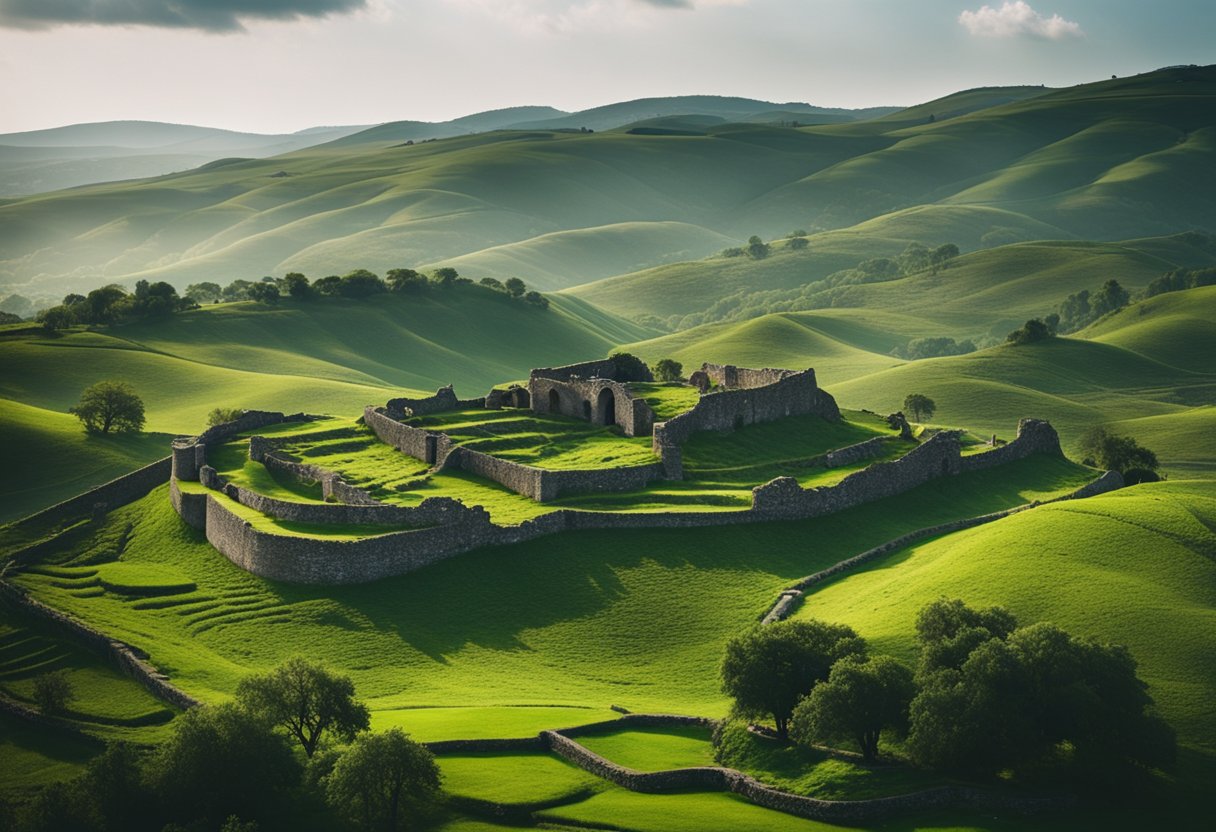
In this section, we’ll explore County Cork’s pivotal role in the Irish fight for independence, focusing on the rise of the IRA, the Irish War of Independence, and the influential figure of Michael Collins.
Rise of the IRA
The Irish Republican Army (IRA), originally known as the Old IRA, emerged as a response to the quest for Irish self-governance. In County Cork, flying columns—mobile units of the IRA—engaged in guerrilla warfare against British forces. These units were highly active and effective, striking quickly before withdrawing to avoid capture. Through these tactics, the IRA intensified its campaign for an independent Ireland.
Irish War of Independence
The Irish War of Independence (1919–1921) made Cork a significant battleground. As the Rebel City, Cork witnessed some of the most intense conflicts between the IRA and the Royal Irish Constabulary (RIC), punctuated by ambushes and reprisals. The conflict in Cork wasn’t just military; it was also symbolised by inflicting economic damage, as seen in the burning of Cork when parts of the city were set aflame by British forces in retaliation for the IRA’s actions.
The Role of Michael Collins
Michael Collins, a son of County Cork, was paramount in the fight for independence. Collins’ role in organising the IRA’s intelligence network, his part in planning assassinations, and his contribution to the development of guerrilla tactics were vital to the IRA’s campaign. His efforts galvanised the fight within Cork and inspired the broader movement for Irish freedom. Collins’ legacy is inseparable from Cork’s history and its reputation as the Rebel County.
Cultural Panorama
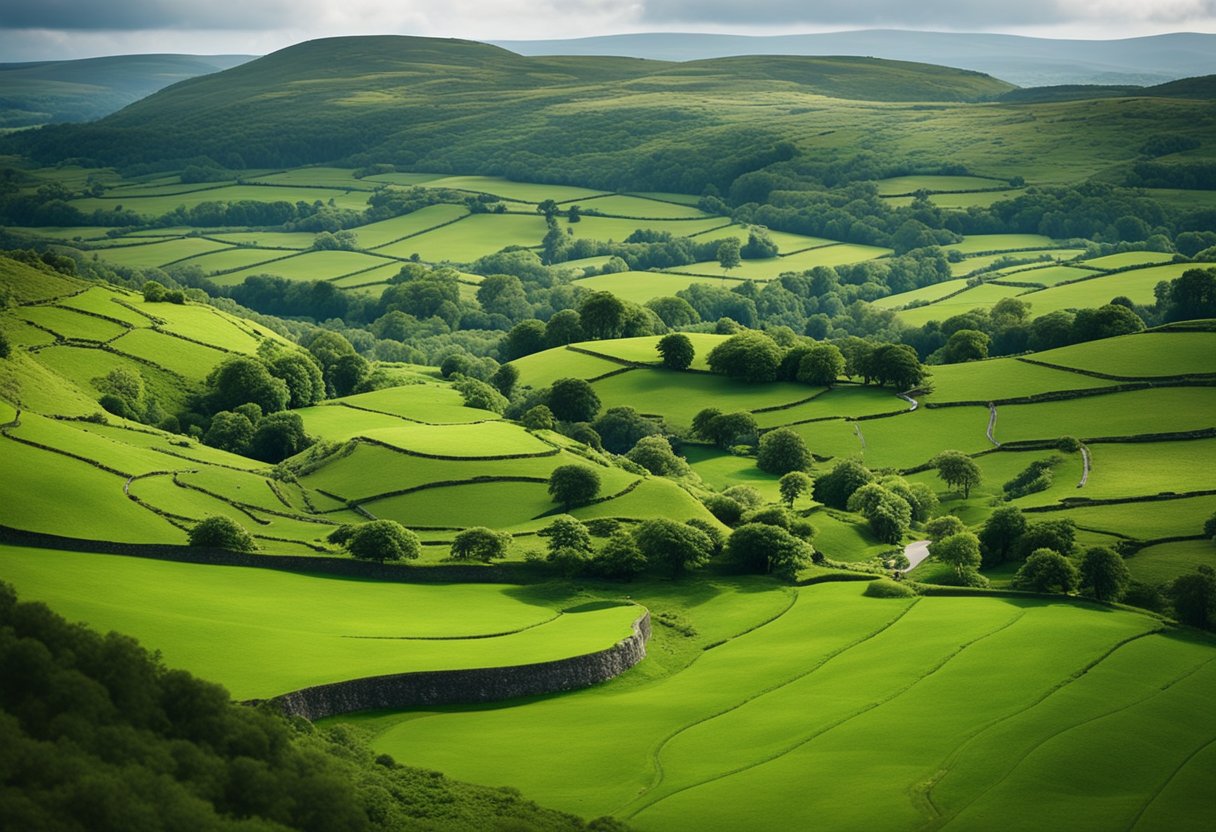
In the rich tapestry of Ireland’s heritage, County Cork stands out with its vibrant cultural panorama, steeped in musical music and a tongue that carries the weight of history.
Music and Language
Cork’s musical landscape is as diverse as it is historic, weaving traditional Irish tunes with contemporary beats. We find traditional ballads echoing through the city’s historic pubs, often complemented by the rhythmic tapping of the bodhrán. The city has birthed notable musicians, with genres ranging from folk to classical and jazz. A quintessential Corkonian experience is listening to live music sessions that showcase seasoned musicians’ skills and the spirited camaraderie of its people.
The Irish language, or Gaeilge, though less commonly spoken as a first language in Cork, is an intrinsic part of our cultural fabric. Initiatives to preserve and promote the language flourish, particularly in Gaeltacht regions, where immersion schools and cultural centres keep the linguistic heritage alive for future generations.
Customs and Traditions
Our customs and traditions reflect the Rebel County’s storied past. One of the most notable is the Cork Folk Festival, which encapsulates the essence of Corkonian culture through music, dance, and storytelling. This festival showcases our cultural diversity and is a testament to our commitment to preserving our unique country’s customs.
With a culture that has been moulded through centuries of history, the people of Cork take pride in festive traditions that bring together communities. The Wren’s Day on 26 December is a fine example, where musicians and dancers parade the streets adorned in straw masks and colourful attire, a nod to our ancient Celtic heritage. Much like our music and language, this joyous celebration symbolises the resilience and enduring spirit of Ireland’s heritage.
Architectural Legacies
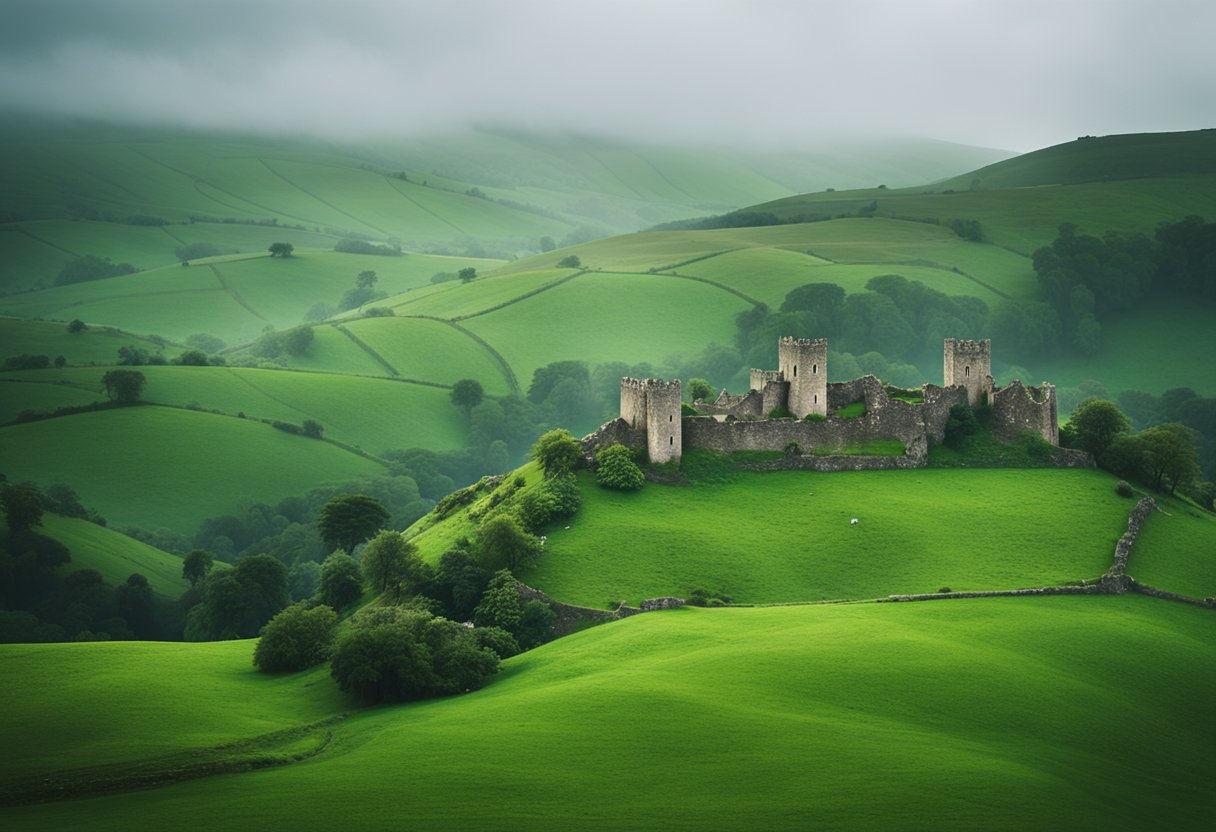
County Cork is steeped in architectural grandeur, representing centuries of history that have shaped its landscape. Our journey into the Rebel County’s architectural legacies will uncover the historical depth etched into its structures, offering enlightening insights for historians and aficionados alike.
Historic Buildings
Our region boasts many historic buildings that tell tales of bygone eras. One notable institution is the University College Cork (UCC), established in 1845. The UCC campus artfully combines gothic revival architecture with modern developments. Its historical significance is palpable, with the main quadrangle and stone corridors offering a tangible connection to the past.
The impactful architecture seen in buildings across Cork reveals the unfolding of our story through time, eagerly shared by historians who regard these structures as chronicles written in stone and mortar.
Castles and Forts
Castles and forts, standing testament to our tumultuous history, punctuate Cork’s landscape. Among the most famous is Blarney Castle, home to the legendary Blarney Stone. Erected nearly six centuries ago, the castle provides a myth for visitors to ponder and an impressive example of medieval fortification.
| Notable Castles of County Cork |
|---|
| Blarney Castle |
| Blackrock Castle |
| Barryscourt Castle |
These enduring edifices, from the majestic towers to the remnants of ancient walls, invite us to appreciate the architectural prowess and tactical ingenuity of past societies, and they hold special significance in our collective identity as the Rebel County.
Notable Figures and Legends
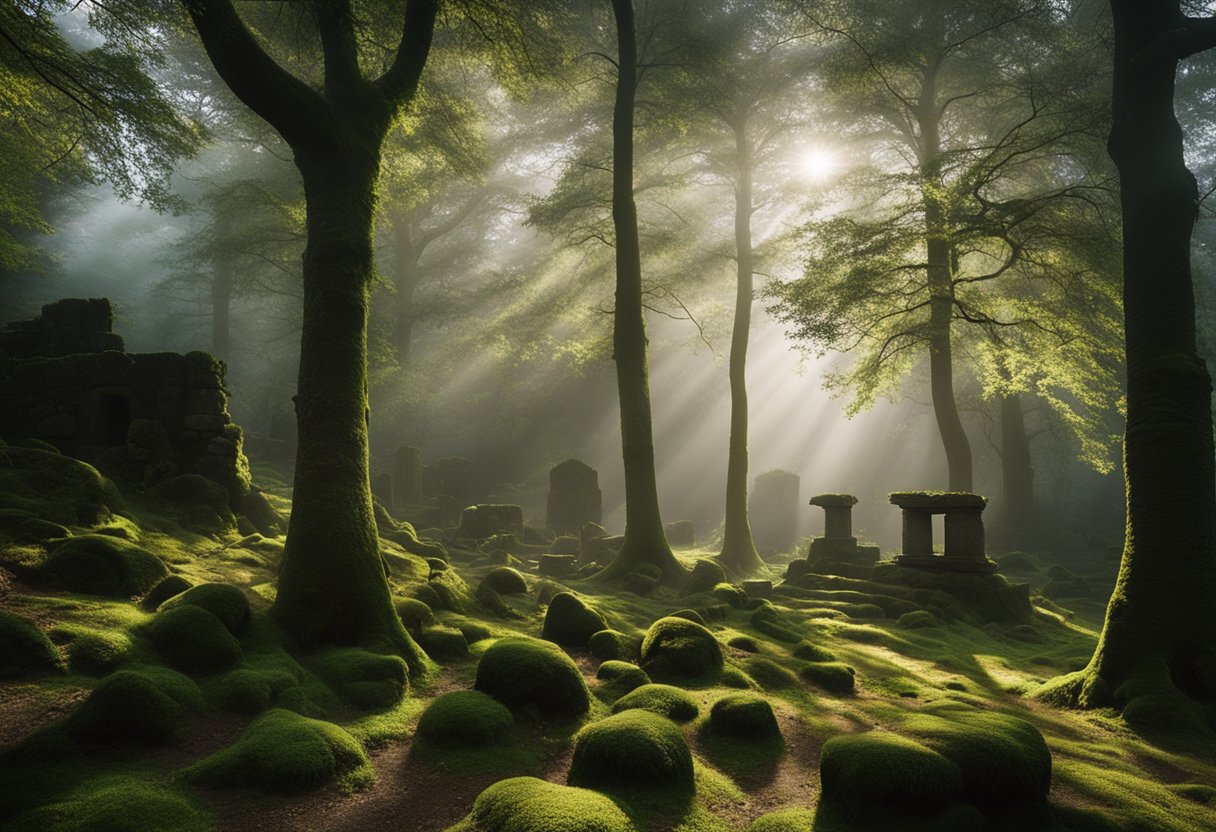
In exploring County Cork’s rich tapestry of history, we encounter many illustrious characters who’ve woven their legacies into the region’s fabric. Their stories resonate through time, coloured with the hues of rebellion and resilience.
Lambert Simnel and Perkin Warbeck
Lambert Simnel, a pretender backed by significant forces, laid claim to the English throne as the Earl of Warwick during the reign of King Henry VII, igniting political intrigue. His attempts ultimately led to his capture at the Battle of Stoke Field in 1487. Simnel’s life took a peculiar turn as he found mercy from the King and spent his days working in the royal kitchen.
Following in similar footsteps, Perkin Warbeck declared himself the Duke of York, masquerading as Richard of Shrewsbury and fostering support in Ireland, particularly in Cork, which had sturdy Yorkist sympathies. Warbeck’s stint as an imposter, which drew support in 1491, left an indelible mark on Cork’s reputation, earning it the “Rebel County.”
Revolutionary Characters
The Kingdom of Desmond within County Cork was a bastion of ancient Irish rule, often defying the encroaching powers. This spirit of defiance found a more recent embodiment in Michael Collins, a native of Cork and revolutionary par excellence. Collins was instrumental in Ireland’s struggle for independence, his strategic prowess indomitable, and his legacy unequivocally pivotal in shaping modern Ireland. His life and untimely demise in 1922 during the Irish Civil War cast a long shadow on the heartstrings of the Irish populace.
With their disparate crusades and epochs, these individuals contribute to County Cork’s allure as a historical epicentre, brimming with narratives of those who dared to challenge the status quo. Our collective memory cherishes their vigour, shaping the cultural heritage we proudly acknowledge today.
Economic History and Development

As we explore the economic tapestry of County Cork, it’s essential to understand its evolution from a historic trading hub to a centre for industrial growth. The bygone eras of bustling marketplaces and the later waves of industrialisation tell a compelling story of economic advancement.
Trade and Marketplaces
County Cork has long been a pivotal trading centre. The origins of Cork city, a monastic settlement, saw the city develop into a significant maritime port. Trading with London and beyond, Cork contributed to Ireland’s economy through its robust exchange of goods. The English Market, a notable Cork landmark dating back to the 18th century, epitomises the city’s historic trade relationships. This covered market has been at the heart of Cork’s commercial life for centuries, a testament to its enduring legacy.
- Key Exports: Livestock, dairy, whiskey
- Importance: Central marketplace in Cork for local and international trade alike
Industrialisation and Growth
Following the initial stages of trade, Cork experienced substantial industrial growth in the 19th and early 20th centuries. Its economy diversified beyond trading, with several industries flourishing within the city and surrounding area. The expansion of the railways and the development of the port facilities bolstered this growth, integrating local producers with broader markets.
- Notable Industries: Brewing, distilling, shipbuilding
- Economic Impact: Increased employment, urbanisation, global market reach
We find ourselves ingrained with a rich local history intricately woven by these economic developments, cementing County Cork’s reputation as the ‘Rebel County’ in spirit and its enterprising pursuits.
Sacred Sites and Religion
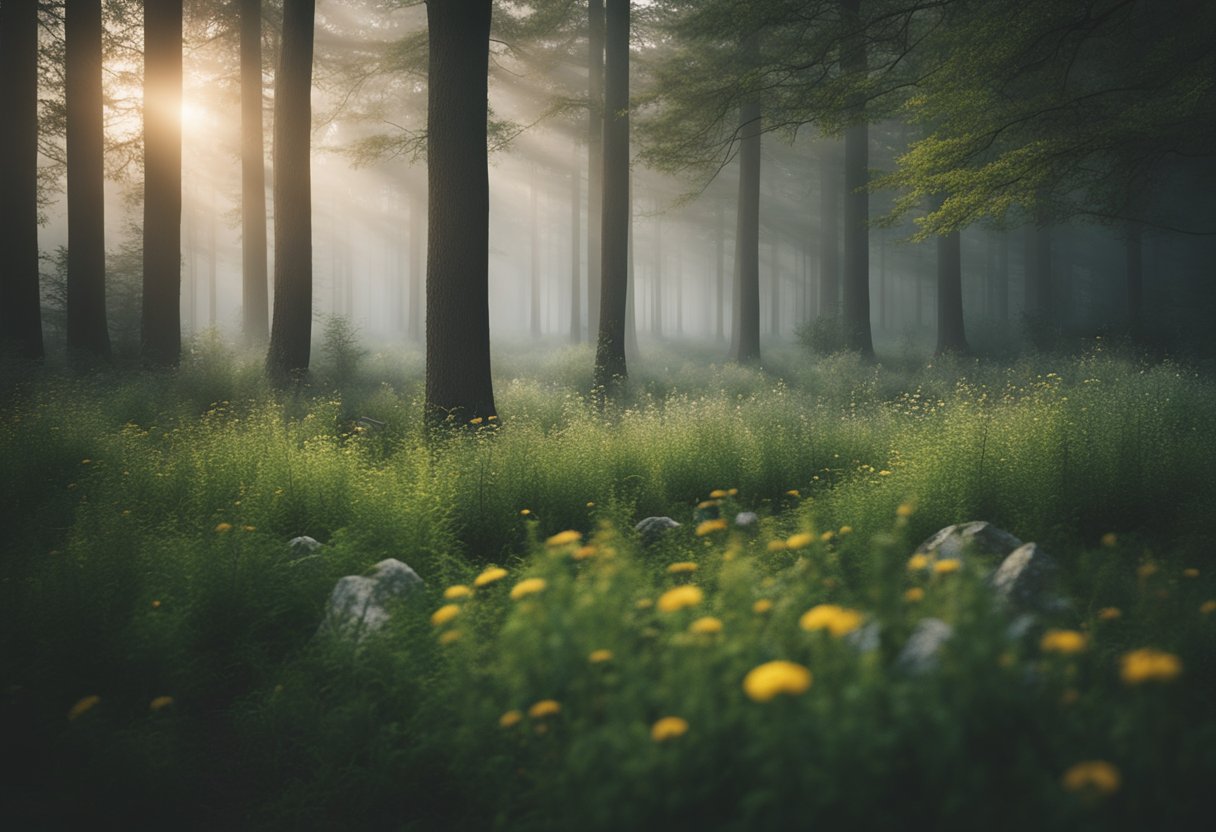
In uncovering the rich tapestry of County Cork’s spiritual heritage, we come across an array of sacred sites that offer us a glimpse into the region’s religious fervour and the shroud of mysticism it is enwrapped in.
Churches and Holy Places
County Cork is home to a multitude of churches that serve not just as places of worship but also as repositories of local culture and heritage. Among these, the holy wells scattered across the landscape attest to the Celtic spirit that still resonates in modern religious practices. Each holy well often has a patron saint and is a site for local gatherings on specific feast days, where the rituals and blessings observed directly link to the region’s ancient religious customs.
Mythology and Superstitions
The Rebel County’s legacy is steeped in mythology and superstitions. Centuries-old tales speak of faeries and spirits dwelling within the hills and hollows of Cork’s countryside. These accounts, passed down through generations, form an intrinsic part of the local heritage. Sites like the Drombeg Stone Circle, known locally as ‘The Druid’s Altar’, serve as monumental reminders of an era steeped in druidic ceremonies and astrological alignment, all of which shape the collective identity of Cork to this day.
Tourism and Modern Attractions
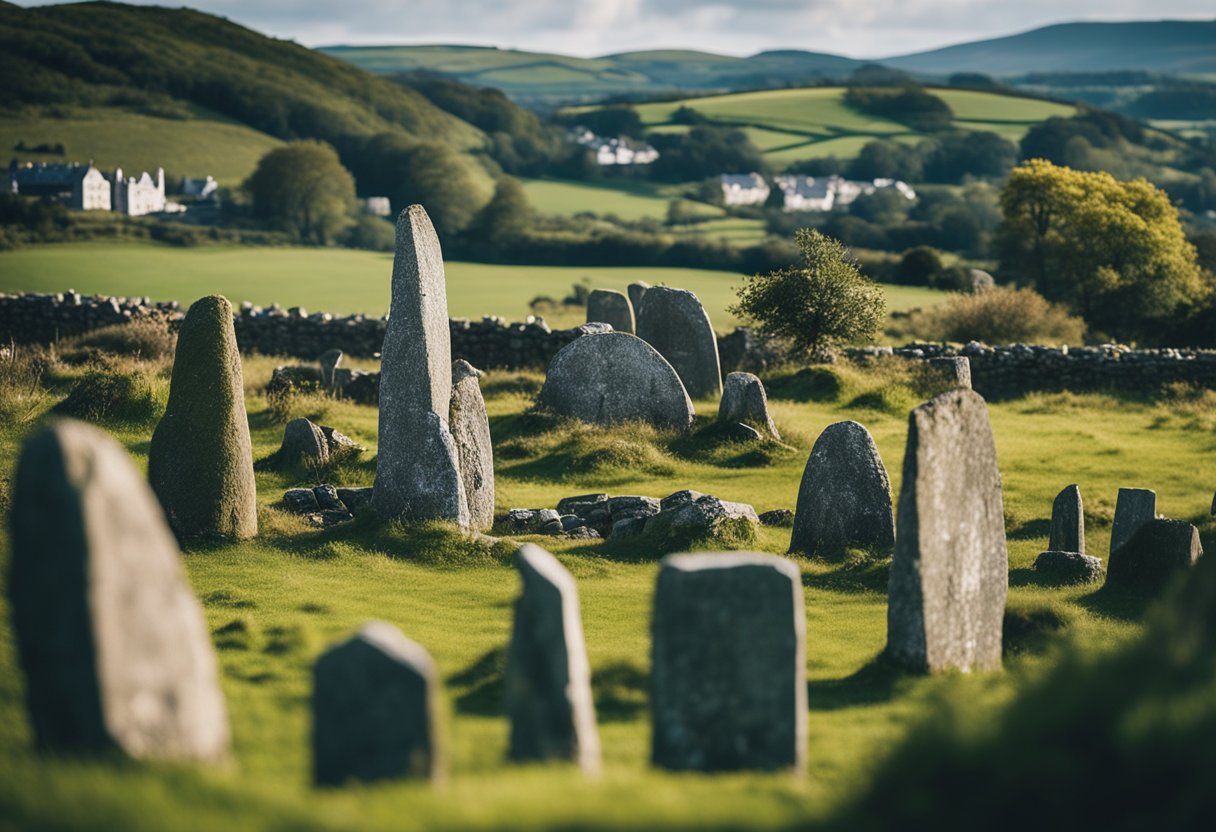
The mingling of past and present makes County Cork a remarkable travel destination. The region offers a wealth of modern attractions rooted in its rich history and folklore, ensuring a memorable experience for all who visit.
The English Market
Right at the heart of Cork City lies the English Market, an institution reflecting a trading history dating back to 1788. Today, this market is a lively hub where locals and visitors can savour artisanal foods and traditional Cork delicacies. It’s a place where the past’s culture blends seamlessly with today’s tastes, providing an authentic culinary experience that’s as fresh as it is historical. Those exploring the market will find a variety of local cheeses, meats, and seafood, making it a must-visit spot for food enthusiasts.
Blarney Stone and Blarney Castle
Adventure-seekers can explore lush gardens and historic structures within the enchanting grounds of Blarney Castle, including the famed Blarney Stone. Kissing this stone, strategically situated atop the castle’s battlements, is said to endow the kisser with the gift of eloquence. Not just steeped in legend, Blarney Castle itself is an arresting sight, its towers and battlements embodying the storied past of Ireland. The castle and its stone are surrounded by mystical gardens that lend a serene beauty to this storied place.
Outside these widely celebrated attractions, areas like Bandon, Kinsale, and Skibbereen offer their unique blend of scenic beauty and historical depth. Whether indulging in the gastronomic delights of the English Market or absorbing the ancient allure of Blarney Castle and its storied stone, County Cork showcases a tapestry of attractions, bridging the gap between folklore and the buzz of modern tourism.
Social Fabric and Community Life

In this section, we will uncover the nuances that shape the Corkonian identity and address present-day social issues underpinning the community life in Rebel County Cork.
The Corkonian Identity
The identity of Corkonians is intimately tethered to Cork’s historical narrative, often referred to as the “Rebel County”. This epithet, an ornament of pride for the locals, traces its roots to the county’s history of resistance and resilience, arising from events like the support of Perkin Warbeck in 1491 during the War of the Roses. Cork’s social tapestry is further enriched by its grand civic spaces like the Grand Parade, where the exchange of ideas and communal discourse has thrived.
Women, too, are indispensable weavers of this social fabric, often spearheading community initiatives and cultural preservation that secure social cohesion. Throughout history, their stories and efforts have painted the canvas of Corkonian society with deeper shades of solidarity and legacy.
Contemporary Social Issues
In contemporary times, Cork faces various social challenges, from housing crises to healthcare accessibility. We observe a city and county grappling with balancing preserving its historical identity with the needs of a modern urban population. Yet, through these issues, the community spirit is a beacon of light guiding Corkonians. Their resilience is also reflected in preserving cultural landmarks like castles and historical sites, ensuring that while Cork evolves, it does not lose sight of its storied past.
Connectivity and Transportation
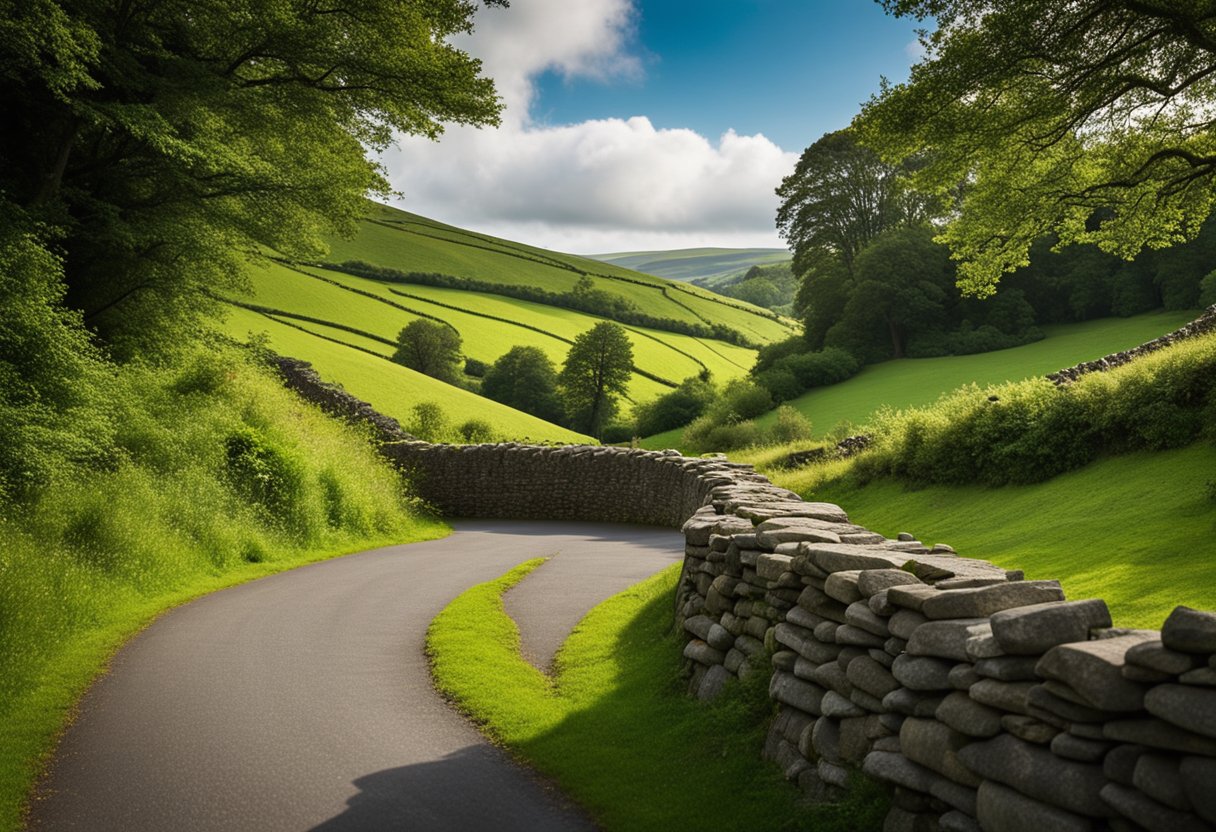
County Cork’s infrastructure has been instrumental in knitting together the vibrant stories and folklore interwoven with its identity as the ‘Rebel County.’ The region’s rich past and the ever-evolving present are reflected in its historic thoroughfares and modern transportation networks connecting people to the heart of Cork.
Historic Bridges and Roads
The arteries of Cork’s storied past, historic bridges like Daly’s Bridge, affectionately known as the ‘Shakey Bridge’, stand as a testament to the city’s architectural heritage. The roads of Patrick Street and Grand Parade, lined with many shops and historical landmarks, have long been central to Cork’s economic vitality and social life. Our connection to Cork’s folklore is further bound to Douglas Street, which has borne witness to the march of time, shaping the city’s narrative with each footstep.
Evolution of Public Transit
The narrative of Cork’s public transit is one of transformation and adaptation. From the horse-drawn trams of the bygone era to the buses that now traverse the city, Cork’s journey to modernity is showcased through its commitment to accessible and efficient transportation. The echo of the past, where the tramlines connected suburbs to the city centre, can still be felt in the bustling bus routes that journey through historic routes and thriving modern markets, ensuring Cork remains a living tapestry of old and new.
Frequently Asked Questions
In this section, we explore some of the most common questions about the rich folklore of County Cork, often referred to as ‘The Rebel County’, uncovering the supernatural tales, notable mythical figures, and the unique way these stories weave into the fabric of Irish culture.
What tales of the supernatural are associated with County Cork?
County Cork is steeped in supernatural lore, including stories of ghostly apparitions and eerie hauntings. One such tale is that of the White Lady of Kinsale, a forlorn spirit said to roam the grounds of Charles Fort, eternally searching for her lost love.
Who are the notable figures in Cork’s mythical lore?
Cork’s mythical lore brims with notable figures such as Finn McCool, a legendary warrior whose exploits are central to Irish mythology. The county also celebrates the more sinister figure of the Dullahan, a headless horseman who roams the countryside.
What are some traditional County Cork legends passed through generations?
Legends like that of the Children of Lir, a poignant tale of transformation and endurance, have been passed through generations in County Cork. The region also shares in the rich narrative of Oisín in Tír na nÓg, encapsulating themes of love, loss, and the passage of time.
How have County Cork’s folk tales influenced Irish culture?
County Cork’s folk tales have profoundly influenced Irish culture, inspiring literature, music, and the arts. These tales have also fostered a strong sense of communal identity, celebrating a storied past that continues to resonate with the Irish people today.
What are the origins of the White Lady legend in Ireland?
The origins of the White Lady legend in Ireland are often sourced from tragic love stories and ghostly lore. In Cork, the White Lady of Kinsale is a particularly prominent figure, where her tale is linked to local history and the sorrow of lost love.
How do Cork’s folk stories reflect its nickname, ‘The Rebel County’?
Cork’s folk stories often mirror its nickname, ‘The Rebel County’, by recounting tales of resistance and insubordination. A notable historical figure, Perkin Warbeck, made Cork known as a city of rebellion, a theme that threads through the county’s folklore and echoes its indomitable spirit.


